Inside John Legend's "Love in the Future" – Track by Track with Executive Producer Dave Tozer
Dave Tozer has a lot to say about Love in the Future, the expansive new album that he Executive Produced with John Legend. But Tozer doesn’t actually have to breathe a word about Legend’s new 16 track collection – this spellbinding record speaks for itself.
Debuting this week, Love in the Future breaks new ground for Legend, the nine-time GRAMMY Award winner who’s been making waves since his 2004 major label debut Get Lifted. But Tozer goes waaaaaay further back then that with Legend, having been his producer and songwriting partner since the pair first met in Philadelphia in the late 1990’s.
While Legend’s global celebrity has grown massively in that time, Tozer’s own professional stature also looms large. Operating outside of his inspiring personal studio in downtown NYC, Tozer’s sharp musical instincts have made him a first choice for a platinum r&b, hip-hop, rock and pop clientele that also includes Jay-Z, Kanye West, Justin Timberlake, John Mayer, Natasha Bedingfield, Musiq Soulchild, Mayer Hawthorne, Estelle, Jazmine Sullivan and Chrisette Michele.
Spend a little time in Tozer’s welcoming Union Square space, Night Fox Studio, and it’s easy to see why his personal star has risen. His relaxed demeanor is really just a front for an intense sonic passion, a spirit that’s informed by his instinctual – and studied — understanding of music in all its genres and production techniques.
“We have complementary styles, and we spent a lot of our formative years writing together,” says Tozer of his deep relationship with Legend. “So we’re in sympathy in a lot of ways: a lot can go unsaid, and we can know where each other’s headed.
“I think that one of the things that makes us work as an artist/producer team, is that I’m able to pull John into a space that influences him in a certain way. I can pull a certain side out of him that other collaborators often can’t, to a direction that’s a little more edgy for him.”
Their collaboration has definitely borne fruit with Love in the Future, which Tozer executive produced with Legend and Kanye West. In total, Tozer has production credits on 13 of the album’s 16 songs, mixed 12 songs, was a songwriter on nine of them, a musician on 13 tracks, and engineered 12 songs. With that kind of perspective, no one is better qualified than Tozer to understand the evolutionary landmark that Love in the Future represents for Legend’s career.
“Maturity,” Tozer says. “He’s become more mature as an artist. He’s taking some risks on this album, but not in a way that will turn his fans off. John’s been good about trying to do something different than the previous album, and you’ve got to respect that. He’s always been a great singer, but he’s gotten even better. As for my involvement, I think I’ve gotten better as a producer and arranger as well.
“I think this record is a very good direction for John,” continues Tozer. “It’s pulling from past influences and still moving it forward — that’s important for any artist to do.”
Each of the 16 tracks on Love in the Future, plus the four bonus tracks, were all mastered by Dave Kutch of The Mastering Palace. “Dave did a great job,” Tozer notes, “and he really helped me get across the sonic vision that I had for the album.”
Equipped with a new set of ADAM S3X-H monitors, Yamaha NS-10 monitors, an Apogee Symphony I/O converter, a Dangerous Monitor ST, a dual quad core Mac Pro, Logic Pro, and a plethora of guitars, keyboards and software plug-ins and instruments, Night Fox Studio is the perfect venue for listening to Love In The Future end to end.
Sitting down with Tozer, SonicScoop got a track-by-track breakdown of the recording art and science that went into John Legend’s new record. Keep reading for Tozer’s inside perspective on how each song was made, from the vocal signal chain to effects choices, classic to experimental — here’s how an instant classic comes together.
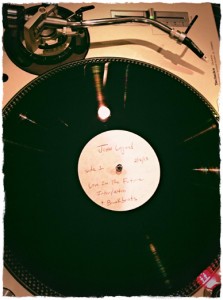
The lacquer acetate that was used to record the “Love In The Future (Intro).” Tozer pressed the song to vinyl and played it back into Logic Pro. (click to enlarge)
“Love in the Future (Intro)” – the album’s spare first cut.
This one is just me and John, cut live. I’m playing a 1950s style guitar with a very vibey, murky sound, with John singing in the live room.
There’s some cool voodoo to this track and I wanted it to have the character of an old record, so I ended up printing it to vinyl, then I recorded back in from vinyl. So the introduction is a vinyl acetate recorded at a high-quality conversion. It’s not me putting a plug-in effect on it — this is actually a record!
“The Beginning…” – a spacey song, with a purposeful hot beat. The feeling is haunting hopeful, and intense, with a spare sense of minimalism.
It’s very minimal with some haunting sounds. I’m using the sounds of the Mellotron a lot, giving the track depth and heavy mood.
On recording Legend’s voice
The thing is, his voice is such a beautiful instrument, and I feel like it will always be the centerpiece of a John Legend song. So recording him is about getting the magic out of the performance.
Typically we were recording vocals at Germano Studios. I usually record John through a Telefunken U47 from the late 40s. That’s usually my go-to mic on John — I found that I really like him through the classic U47. It’s just such a fantastic mic, it has a lot of great clarity and body for him. John’s a pretty strong singer, and that mic seems to take it pretty well.
It’s worth noting that I’ve recorded all his vocals on the album to tape. That adds some nice upper harmonics, and it has a very nice saturation and character to it. This vocal has a dark slap-back delay.
Mostly, the signal path would be a U47 going to a Universal Audio 1176, or sometimes an LA2A compressor. Preamp-wise mostly we went through Neve 1073’s or 1081’s. I’m going for character, that’s the main thing. I don’t want neutral, I want character. The 1176 or the Neve impart character on it.
In terms of the compression, we won’t go too hard on the way in, unless we’re going for that effect. Just some subtle, three or six dB worth, of compression on the 1176. We’re getting some character out of the preamp, not breaking it up. The 1081’s have a nice mid-rangey character, but still smooth and then it does this magical thing.
We are hitting tape a little bit to get some nice saturation. It’s a big part of the sound. We cut it all at 15 ips, a little slower than 30 ips, which makes a little bit of tape hiss, but I usually like the hiss. The machine we used is a ½-inch Ampex ATR 102. Sometimes a Studer, but mostly half inch mastering machines were what we were tracking into on the way in, harvesting that sound coming into the computer.
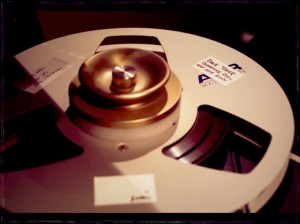
Dave Tozer’s recording reel. Most of “Love In The Future” was recorded to tape before being transferred to Logic Pro. (click to enlarge)
So we were coming off the repro head on the tape machine, recording that tape signal into the computer real-time, and recording the direct digital signal at the same time. Since we would be getting latency from the tape machine we were not monitoring the tape during the recording. After recording the vocal take, we would line up the tape signal to the digital signal. The digital signal basically was used as a visual reference. So we’re cutting the sound from tape, but still doing digital recording and editing. It’s like a manual version of the CLASP system.
After the tape machine, we went through Germano’s Lavry Gold converters, which are really great converters. Then it all went into Logic Pro. We usually recorded at 44.1 kHz, although if we were cutting piano or strings or live drums, we’d track those at 96 kHz.
On the drum sound
Some of the drums were done by (the producer) Hit-Boy, from the original writing demo beat. Then I augmented the kick and snare with additional samples, which gave them a little more character, depth and oomph. I added reverbs like the UAD EMT 140 plate reverb — you hear some subtle spring reverbs, and definitely plates. That UAD EMT 140 is all over the vocals on this album. I love that reverb.
On the keyboards and extensive use of Mellotron
A lot of Mellotron sounds, which are by nature, old recordings. That’s the thing that’s so cool about the Mellotron and Chamberlin, is they’re sort of the first tape samplers. By the time a recorded sound ends up in an actual Mellotron, it’s a 5th generation master, so the sounds have a LOT of cool haunting character. On this song I used vibes and choir sounds from the Mellotron — it’s just giving it character, as opposed to me bringing plain vibes. I didn’t want anything too clean. I wanted depth, and character.
And there’s a sample on that song, from “Winter Song” by Sarah Bareilles and Ingrid Michelson. That sample is also from Hit-Boy. He brought in the basic sample and basic drum pattern for the song.
“Open Your Eyes” — a freely spirited, yet carefully constructed song that’s bouncy with a great 70’s vibe. It has rhythmic keys, and a crisp boomy beat, a killer vocal, and an expressive guitar solo from Mike Dean to cap the song.
That’s a cover of the Bobby Caldwell song. This song was sampled in the Common song “The Light.” Most people know the Common song more than the original, but this is covering the original Bobby Caldwell song, and the chorus has some of the flavor of the Common version. So this is the third time around, which encompasses some of the original and is also a nod to the Common version.
On the lead vocal sound
There’s some really cool delay stuff there. There’s a lot of the SoundToys EchoBoy, which I love. That plugin is so versatile, and it’s got so much voodoo. I love the fact that it can style itself after tape slap, master tape, studio multi-track tape, you can go for early Boss-style analog guitar pedals, you can go to an Echoplex tape sound. You can go for the Binson Echorec sound that David Gilmour used a lot. So there’s a lot of versatility to it — you can really dig into the parameters, and do a lot of tweaking under the hood when you learn that plugin well.
On recording and mixing the guitar solo
The guitar solo was played by Mike Dean. That’s one he did on an earlier version of the song, interestingly enough, and we actually recut it a couple of different times. In the end we went back to the early original version, because we felt like it has the magic. That was done in a session in Hawaii, one of the earlier sessions with Kanye.
There are some delays and some plate reverb on it. I love repeat delays on guitar – sometimes you have quarter note delays, or maybe triplet delays Edge-style, or sometimes you’re using two or three different delays in different settings, and it’s kind of swimming in there. This all has to be tastefully done — some things are more felt than heard. You hear delays used throughout the album, but there’s an art to using them.
“Made to Love” – the adventurous, second single from the album, it’s powered by an urgent tribal beat underneath guest vocals by Kimbra.
This is one my favorites — it’s the most progressive song on the album. John and I wrote the lyrics and the melody together. It’s got a Chicago House sample, industrial drums, and this dark otherworldly vibe. The lyric is saying in essence, “We were designed to love, we’re like living machines — constructed for it. All of the parts fit.” The classical section at the end is one of my favorite moments on the album.
On capturing Kimbra’s guest vocals
Kimbra’s part came about in an interesting way: we were in the studio together and we played the song for her, and she had a melody idea that she wanted to just quickly record while it was in her head. It was intended that it would be developed and have lyrics written to it, but her scatting sounded so cool, I said, “Let’s just use it like that, instead of developing it further.” So what you hear were the original spontaneous ideas that emerged when she first heard the song. It ended up being very cool.
There’s Mellotron sounds, string orchestra, synth pads, Moog, and lots of vibey keyboard stuff. There are a lot of prominent delays throughout the song, psychedelic almost. The filter on the vocal makes John sound otherworldly, like he’s singing in a small tube.
Space comes down to orchestration. When you’re mixing these tracks, you’re always better off if you have arrangements that are orchestrated right, complementary, or call-and-response. It’s like machinery, which is how I think of James Brown’s band. If you break it down, they’re just playing their simple individual parts with great feel, but when you add it all up, it’s part of this polyrhythmic machinery, just chugging along.
On the huge cinematic ending
Because this was such an unusual song structure, I want something at the end that took it to a new sonic space and mood.
I decide on something classical, but dark and powerful, so that end was written by me and Andrew Horowitz, one of my collaborators. We wrote the string arrangement on that as well. There’s a very classical, arpeggiated piano part, full string orchestra, timpani, Mellotron, and a real choir as well, and the opera singer Aude Cardona is singing on it. So we’re really getting into that vibe of classical orchestration. But then you have all the trippy vocals on it, with all the delay repeats. The climax builds to this great big epic, and then gives it the powerful release on the end.
“Who Do We Think We Are” — the album’s lead single, built on an enchanting mixture of vocals, bass, keyboards, piano, programming, samples, harp, and turntables. It’s longing and glorious all at once.
This actually has three samples. A Marvin Gaye sample from “If I Should Die Tonight,” Jean Knight’s “Mr. Big Stuff,” and a sample from a live show of Lenny Kravitz saying, “This is our song and our song for the future.” It sets up the “Love in the Future” vibe, as well as the next song, “All of Me,” which is a ballad to John’s fiancée. So there’s a flow to the album, and its meaning.
There’s lush instrumentation on that one. John uses the term “luxuriating,” him and Rick Ross waxing poetic about all the finer things in life. Like he often does, John is doing a variety of parts here, doing all of the background vocals, and ad-libbing in the end.
On producing John Legend’s vocals
Sometimes I’ll hear a particular phrase and say, “Hey, do this,” and I’ll sing him what I’m hearing. But a lot of times he’s riffing on what he hears innately. He’s got a good sense of melody, and he’s a great musician. Some singers have a great gift, their voice, but they don’t know how to use it. John has a great sense of control and melody, and he’s worked hard on that, but he’s also got a great voice. So both ends are covered.
His choice of phrasing is impeccable. He knows how to choose great phrasing, and not everybody does. That helps make him a great songwriter too. John just simply has good taste when it comes to making those kinds of choices. That makes it easy when I’m producing his vocals.
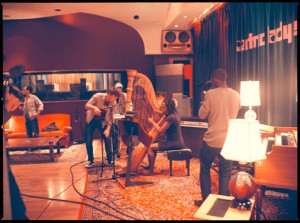
Brandee Younger playing harp on “Who Do We Think We Are” at Electric Lady Stuidos, NYC. (click to enlarge)
On the use of harp
The harp is played by Brandee Younger, and I think it was tracked at Electric Lady.
What I was inspired by with that kind of instrumentation was classic ’60’s and ’70’s Curtis Mayfield, Philly soul, or Motown. That’s when you had this great combination of soul music with these funky R&B rhythm sections, combined with this classical instrumentation on top. You hear it all over Curtis Mayfield records. It’s this very percussive rhythm section, but with actual percussion, not just drum kit: you got bongos, congas, really driving African or Caribbean rhythms. Then you’re topping that off with this European classical orchestration – harps, horns, French horns, strings, celeste.
“Who Do We Think We Are” is just a really classy soul production with raw hip-hop undertones. The harp sound is so angelic, it just gives it that beautiful sound on the top.
“All of Me” – a stirring interplay of Legend’s vocals and piano, it’s a strong love song filled with awe. Engrossing and gorgeous, this track may very well endure for years to come.
This is a very simple, stripped-down arrangement. It’s just piano, vocals, some robots, a couple of synths, and some Moog bass. The weight is all on John’s vocal. And then I harmonized a bunch of his vocals to sound like robots — an Eventide piece might have been used, and the TC Helicon VoiceLive. The VoiceLive sounded cool and gave some great results. We were inspired by that Imogen Heap song “Hide and Seek” — it’s kind of this a cappella tune going on with all the harmonizers. The robot harmonization is subtle – we didn’t want to overdo it — but it lends a little cool character to the whole thing.
Recording the piano
John didn’t play a lot of piano on this album, but this was one of the songs he does play piano on, using the Steinway at Electric Lady.
We used a few different microphones on that: All told the mics were a pair of AKG 460’s, and a pair of Royer 121‘s right on top of the hammers, then a pair of tight room mics which were Telefunken M16s. That was all tracked through that Neve desk in Electric Lady’s Studio A. From there it went through an SSL rackmount compressor, through the Pultec EQs, and then through the Studer A820 half-inch machine. That’s the whole signal chain for the piano, which was engineered by Jason Agel.
“Hold on Longer” – a meld of deep, rich piano and John’s earnest, smooth and soulful vocals, complemented by lush-sounding gang vocals.
The Stevie Wonder influence
The acoustic piano was cut at Electric Lady again. There’s a Moog bass on that one. And I really like the Moog synthesizer, playing those harmonizing Stevie Wonder lead lines, you know? And there’s beautiful string parts too. (At approximately the 1:30 mark), you can hear those great little analog synths on top, just whirring away, just very ‘70s Stevie Wonder playing all of those interwoven melodies, which is something Stevie is a master at.
I’m really happy with the vocal treatment on this one. You can really hear that tape slap I have on there. That’s another way I’m emulating those Stevie records, doing a lot of slapback, a lot of repeats. On John’s vocals I actually ran them into one delay with one time setting — a quick slapback — but then I’m actually running that slapback into another delay with a lot of repeats. So it’s a delayed vocal getting repeated, which has an interesting effect to it, and gives the original vocal signal a little more sense of space.
Arranging and recording gang vocals
In this case it’s John doing all those parts. It’s a three-part harmony, then doubled. On the choruses, I would tend to choose how many doubles or triples to do, based on the texture I’m kind of hearing in my head. In this case I felt like a couple was enough to thicken it up – we didn’t want it too thick. A lot of times you’ll lose the character and definition if it’s too stacked, it’ll sound too chorused. Sometimes just one or two is enough, then it’s still got character and definition.
Then I’m running those as a group together, through some effects and giving it some voodoo. A lot of plate reverb. And then of course, everything is going through the tape machine. That’s one of my favorites on the album too.
“Save the Night” – a song that really builds as the album’s first half leads to the second half. Pulsed by a four-on-the-floor, complemented by gentle snare tapping.
I like that song. The rhythm’s hitting. We had a demo of the chorus from The Runners, but originally it was in a completely different key. The first thing I did was change the key to put it in a better spot for John’s range, then John and I rewrote the song, starting with the chorus melody, then we wrote the rest of the parts around it. We gave the verses more of a bluesy vibe and we added some 808s, a ton of claps, and really made those drums hit.
Dave’s affinity for Moogs
I just dig the sound of them, man! They’re so classic, particularly the Minimoog, and especially the basses. We get such gnarly sounds out of them. I have a great Moog plug-in too; I love the MiniMonsta by GForce. It sounds awesome. We spent a lot of time with the Moogs, and I’m good at navigating them to conjure up sounds out them. You can get great Theremin tones too. There’s a lot of versatility to the Moog, even though it’s simple; just three oscillators, a filter, and a LFO. The simplicity of it is what’s appealing.
“Tomorrow” – striking for its Bollywood overtones.
Q-Tip produced this one. I really like the instrumentation, and the vibe. It’s a cool track.
“What if I Told You? (Interlude)” – at :50, a beautiful and engaging musical moment.
This one has beautiful horns, you’ll hear how it works with the next song “Dreams.” It’s cool because it’s got this feel of an old sample to it, just this retro feel and vibey-ness. I really enjoy making tracks that aren’t samples feel like samples by applying the right kind of character to the recording & mix. It has a very nostalgic quality.
“Dreams” — an awesomely positive song, with a fast payoff. It has dirty bass behind the beauty, with electric piano. Beautiful and engaging.
On introducing rough edges into the sounds
I think it’s good to get a little dirt in there, because the recording is part of sculpting and shaping the sound. The song is positive, but it also has a melancholy side. The vocoders have a certain sort of darkness to them. So putting the grit on it gives it some character. I keep saying character, but I really think that’s the key to interesting sounding recordings.
“Wanna Be Loved” – a smooth cruiser that’s smokey and pure R&B.
That song was produced by Doc McKinney & Ali Shaheed Muhammad and recorded at Germano Studios. Having Troy Germano around is great for a lot of reasons. One, just because he’s a smart guy who knows how to run a good studio. He’s dialed in to the needs and sensitivities of the producers and artists who come through studio. And he’s got such great experience growing up in the business with his father (the late Eddie Germano of The Hit Factory).
That trickles down to the kind of place he has, the kind of equipment he has, and the kind of staff he has. The monitoring makes it my favorite place to listen to music in the city, outside of my own studio.
When it comes to gear, he has a lot of the things I need, especially plug-ins wise. And he’s made it so I can work seamlessly between there and my own studio.
“You and I” – a composition rich with vocals, keyboards, and deep satisfying drums. It grows in scope, and once again deep lyrics of devotion stand out, with the dark and grand chorus. Then, hauntingly spare at the end.
This song is a real journey. It’s a nice breather for where it is on the record. It’s got a moody guitar to set the tone, then it blossoms open. Then there’s this ‘80s Linn drum snare giving it power in the 2nd chorus. Then the horns, and the Moog synth. There’s this big, climactic bridge, then it comes down to a whisper with this mournful Moog theremin sound. Then it builds back up — it’s got great dynamics.
There’s some cool effects, and a good bit of Mellotron sounds again. I like to think of production as sonic painting, and the Mellotron was a big part of the sonic palate for this album. There’s lyrical themes, but there’s also sonic themes throughout the record.
The bass drum sound is an 808 kind of overdriven a little bit, and filtered out some. And there’s some live drums in there as well, so it really builds and evolves. Those 808s get introduced, then you’ve got big Linn drums smashing. I sampled some vintage drum machines throughout the process of making this album.
“Asylum” — a hugely enveloping song that takes many trips and turns throughout. Very trippy, with a big nasty beat, and huge vocal delays right away. It bursts out quickly, then becomes trippy in the middle, and you wonder where the song can go next. The result is all-encompassing, beautiful, tense, and dark.
This is my favorite song on the album. It’s one of the coolest songs John and I have ever written. It’s the slowest track on the record, and it has this simmering intensity.
The inspiration
The vision for the song kind of started from a joke. The initial concept for the chorus was that you’re in a relationship with Fiona Apple! (laughs) I love Fiona Apple, but people look at Fiona and say she’s a little eccentric or disturbed or whatever, but I think she’s the best songwriter of our generation. I think there’s so much beauty there. The idea is that you’re with someone who might be unusual or eccentric, they might be a little unconventional, but you want to get inside of that headspace with them. Want to be in the crazy. There can be beauty in the crazy, and you want to surrender to it.
That’s an interesting narrative, and you can really paint well with a thought like that. I wanted to make these atmospheric gnarly sounds circling out of nowhere, like they’re inside your head. I wanted it to be the sound of a mental breakdown…but beautiful (laughs).
The rock influence
And you’ve got these heavy drums with the white noise that sound very edgy; dangerous. There are Mellotron flutes in there, backward synths, in an almost Radiohead vibe, but also an element of ‘70s classic rock. The bridge is very Pink Floyd, Dark Side of the Moon inspired, with a very David Gilmour inspired guitar solo.
Then it goes into that orgasmic bridge vocal by Jessyca Wilson that really soars. It really takes you to a place that’s very cinematic. It’s like the imagery of a movie.
“Caught Up” – the album’s final track sports a big, Portishead beat, like timber shaking. It’s part of a song that washes over you like an ocean wave.
That’s how the album fades to black. Pretty cool right? There are a lot of vocal panning and delay tricks at the end as well. For example, I was changing the delay time on the Roland Space Echo in real time, which also changes the pitch of what’s going on – you can hear it on the vocal repeats at the end.
We got into some cool effects – some of it is rooted in psychedelia for sure. I wanted those kind of effects to be very prominent and make for an interesting headphones listening experience.
We had lots of fun on that one, and it’s got a great line, (sings) “I finally got to take the night off/To make some little tax write-offs.” Use your imagination to figure that one out!
– David Weiss







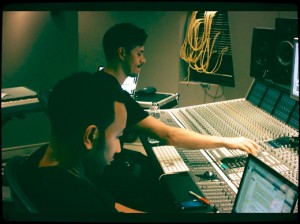
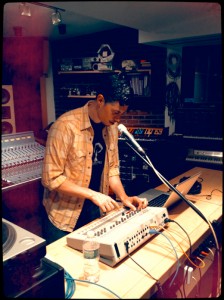
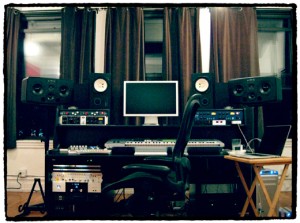
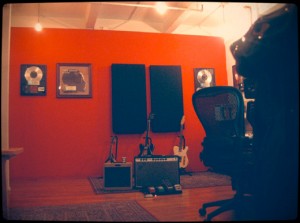
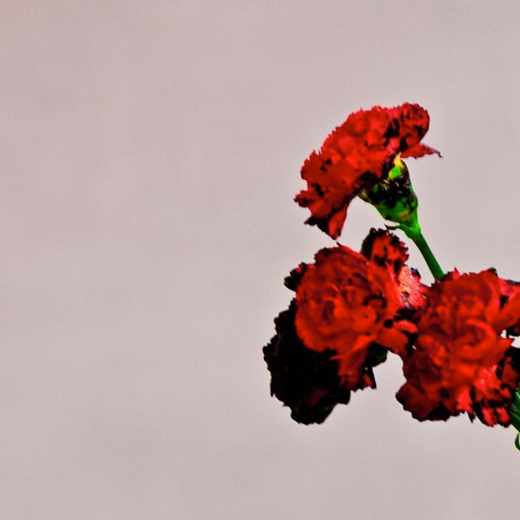
Mel Lambert
September 5, 2013 at 9:32 pm (11 years ago)An outstanding article, David, with so many
creative tricks-of-the-trades. Tape and vinyl … Plus Logic Pro; a unique combination.